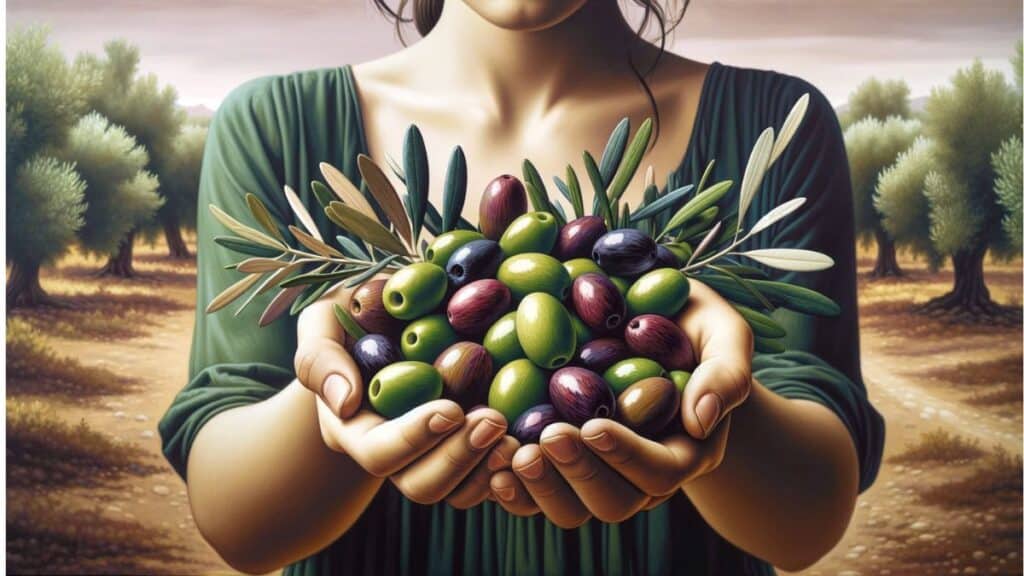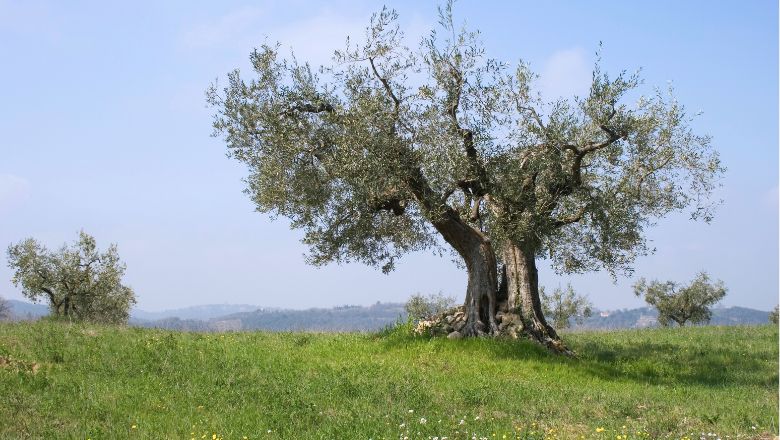How Many Olives Are Harvested On an Average Olive Tree?
Olive Knowledge is a part of Amazon Associates. As an Amazon Associate, we earn from qualifying purchases. Read our Affiliate Disclosure to learn more.

In today’s article, I’ll try to give you a thorough answer on how many olives are harvested on an average olive tree. I know that you would want to know the exact number, but it’s literally impossible to answer that, so I’ll stick with some averages.
Key Takeaways:
- An average matured olive tree produces anywhere between 10 to 70 kilograms of olives.
- It’s between 2500 and 17500 pieces of olives.
- It’s hard to determine the exact number because the yield depends on so many factors, such as cultivar, weather, climate, etc.
It’s Hard To Tell The Exact Number
As I already said, showing you the exact numbers is extremely hard. I would even say impossible. There are many differences in results among olive growers, and each olive grower has different results each year.
However, my survey shows the above data, and according to my experience, these are real-life expectations.
For example, some olive trees produce up to 800kg of olives each year. Imagine that, and it’s so much above the average. However, that’s very rare and probably won’t happen to 99% of us.
10 to 70kg of olives per tree is the median average. Also, the 4 grams is an average weight of one olive fruit, yet some olives can weigh up to 7-8 grams, or only 1-2 grams. There are too many variables.
Yield Depends On Many Different Factors
The average yield depends on many factors, which I’ll discuss now. It’s important to consider all of them since they’re different each year and highly affect the average olive fruit production.
Olive Variety
The first and the main factor is the olive variety. According to IOC, there are around 139 olive varieties grown worldwide.
Each olive variety is different in average yield, average fruit size, and weight, and average percentage of olive oil produced per kg of fruit.
Also, many olive cultivars require a pollinator tree of a different cultivar in order to produce olives. Some varieties are susceptible to that, while others can produce fruits without trees around them.
Olive Tree Maturity
Olive trees, when planted, need some time to start bearing fruits. Usually, you can see the first olives when the tree is around 3 years old. However, most olive cultivars reach their maximum yield potential after 5-7 years.
The great thing is that after the olive tree is matured enough, it’ll produce fruits for many years to come. There are some trees older than 1500 years, and they’re still producing fruit every single year.
How Fertile The Soil Is
Even grass doesn’t grow the same in all places. So, the soil isn’t the same everywhere in the world. If the soil is fertile, olives will grow much better and of course, produce much more fruit every year.
That’s why many olive growers check the soil and then replenish the nutrients needed for the best olive yield. Sometimes, one farm will have perfect ground, and the other farm that’s only 10km away won’t have fertile soil for planting olive trees.
Climate and Weather Conditions
We all know that olives like warmer climates, especially the Mediterranean type of climates. However, the weather conditions are different each year, and they always affect the olive yield.
There are no two years with the same weather. Some years there is more rain, while the subsequent one lacks rain. The same is true with the sun and other weather elements.
If hail happens throughout the year, it can reduce the olive yield significantly. The same is true with powerful winds just before the harvest.
How You Maintain The Tree
The human impact on olive yield is enormous. You should properly take care of olive trees in order to get the highest amounts of olives per tree. Also, it’s not all about how many olives are harvested; it’s about how quality the fruits are. So, it’s not always about quantity; it’s about quality too.
Some people like to have bushy olives, and even though they think that’s the way to get more fruits, the situation is almost always the opposite. Olive tree needs to have fresh air and just enough dense canopy so the sun rays can reach all parts of the tree.
Related: How To Prune Olive Trees For High Yield
How Large Is The Tree
The size of the tree is somehow related to how you maintain the tree, but I had to diverse it into two categories. That’s because some trees just won’t grow too large, whatever you do. You can’t expect a small olive tree to produce as much fruit as two times more giant trees. Even though these situations can happen too, it’s not very often.
Sometimes, if the tree is too large and bushy, you won’t be able to manually harvest all the olives from it, even though it’ll produce it. That’s why many people use various tools for olive harvesting to harvest everything the tree has grown.
How Long Do Olive Trees Produce Fruit?

I gave you the answer on how much fruit you can expect from an average olive tree. Also, there’s one more question I asked all the time when I was starting, and it’s “How long do olive trees produce fruit?”. I didn’t want to plant something that would give fruits for 15-20 years only.
Olive trees may produce fruit even if they’re a few thousand years old. If the tree is maintained well, it’ll bear fruit for many years to come. So, there’s no time limit. As long as you take care of it, and as long as it’s healthy, it will bear some fruit.
Of course, as the tree becomes extremely old, you can’t expect the same amounts of fruits to be harvested each year. The number of olives harvested will reduce, but the tree will constantly produce them.
Conclusion
After reading the whole article, you can see how many different factors are there, and all of them affect olive tree fruit production. Even worse, they’re different each year. I never had the same two years when it came to the olive harvest. Sometimes I get 15kg of fruit per olive tree, while another year, I could harvest more than 30kg of fruit per tree on average.
If you harvest anywhere between 10 to 70kg of olives per tree, I think you should be happy with the yield. Of course, if it goes above those numbers, even better. That just means that you’re above average and that you’re doing a great job at growing olives.
Related:
